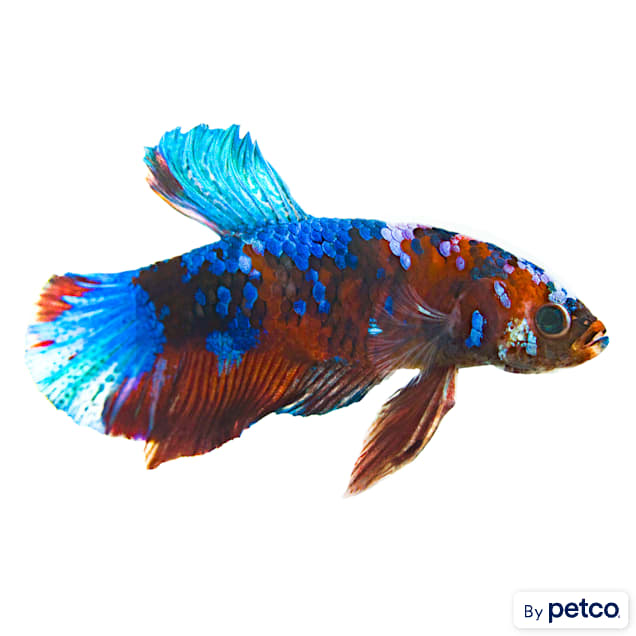Just How to Breed Betta Fish Efficiently: Professional Techniques and Insights for Hobbyists Aiming To Broaden Their Betta Collection
Reproducing Betta fish needs a nuanced understanding of genes and environmental problems, making it vital for hobbyists to come close to the procedure with both diligence and treatment. Creating an optimum breeding setting, selecting the ideal pairs, and observing the ins and outs of their courtship behaviors are fundamental actions that can substantially influence the result. In addition, the subsequent treatment of the fry is critical for guaranteeing their healthy and balanced development. As we check out these vital components, it ends up being clear that effective breeding is not just concerning the first pairing but includes a more comprehensive strategy that advantages mindful consideration.
Recognizing Betta Fish Genes
Comprehending the genetics of Betta fish is essential for successful breeding, as it affects qualities such as color, fin shape, and behavior. Betta fish show a varied variety of colors and patterns, largely determined by their hereditary makeup.
In enhancement to pigmentation, fin morphology is another significant facet of Betta genetics (betta fish). The sizes and shape of fins are influenced by various genetics, consisting of those that identify whether the fins are short, long, or veil-shaped. Recognizing these genetic variations aids breeders forecast the phenotypic results of their offspring
Moreover, behavior characteristics such as aggression and territoriality can likewise be influenced by genes. These behaviors play an essential function in the breeding procedure, as they can affect generating success and the overall personality of the resulting fry. By thoroughly understanding these hereditary concepts, breeders can make enlightened decisions, inevitably improving their reproduction programs and accomplishing preferable results.
Preparing the Reproduction Environment
Creating an ideal reproduction environment is important for the effective recreation of Betta fish. The initial step in preparing this atmosphere is to choose an ideal breeding storage tank, preferably varying from 5 to 10 gallons.
Following, take into consideration the use of a sponge filter or an air stone to supply mild water circulation without creating strong currents that can worry the fish. It is vital to install plants or breeding cones to use concealing places and advertise comfort for the female during the spawning process. Floating plants, such as Java moss or water sprite, can likewise produce a much more natural surroundings while facilitating bubble nest building by the male.
Before introducing the breeding pairs, guarantee the water is conditioned and devoid of dangerous chemicals, such as chlorine or hefty steels. betta fish. Routine water modifications must be carried out to preserve ideal water high quality, improving the possibilities of successful breeding. With these preparations in place, the breeding environment will certainly sustain the health and health of both Betta fish
Choosing Breeding Pairs
Picking the ideal breeding pairs is important for accomplishing effective Betta fish recreation. Healthy Betta fish show dynamic colors, clear eyes, and energetic behavior.
Personality is another vital consideration, as Betta fish are recognized for their aggressive nature. It is suggested to choose a man and woman that show compatible personalities to reduce stress and anxiety during the reproducing process. A calm man can encourage a smoother courtship, while a lady that is too hostile might interrupt the procedure.
Genetic background additionally plays a significant function in the top quality of the children. Reproducing fish that are Full Report genetically diverse can decrease the threat of genetic health and wellness concerns and enhance the general vitality of the fry. It is beneficial to investigate the family tree of both the man and female, concentrating on preferable traits such as fin type, shade patterns, and dimension.
The Reproduction Process
The breeding procedure of Betta fish calls for careful planning and interest to information to make certain a successful result. At first, it is essential to prepare a suitable breeding storage tank, ideally a 5-10 gallon fish tank with a temperature level kept at 78-80 ° F. The container must be geared up with a heating unit, filter (preferably sponge type to prevent solid currents), and lots of water plants for the lady to conceal.
As soon as the atmosphere is established, present the chosen breeding pair to the storage tank, enabling them to adapt. Observe their habits; the man will show sophisticated courtship rituals, including flaring his fins and developing a bubble nest. If the female shows interest, she will certainly present upright red stripes suggesting readiness for spawning.
When the female is responsive, the pair will certainly involve in a mating welcome, during which the male fertilizes the eggs. Keeping ideal water conditions throughout this period is important for the growth of healthy and balanced Betta fry.
Caring for Betta Fry

Feeding Betta fry is crucial, as they need a diet plan high in healthy protein. They can be fed infusoria or liquid fry food, transitioning to carefully smashed top quality pellets as they grow. Feed little sections multiple times a day to motivate healthy and balanced development without overloading the tank with uneaten food.

As they grow, check their development carefully and divide any hostile individuals to avoid harm. By providing a nurturing environment and correct nourishment, hobbyists can efficiently raise Betta fry into vivid, healthy fish, inevitably improving their reproduction endeavors.
Verdict
Successful Betta fish reproduction have a peek at these guys needs meticulous interest to hereditary selection, ecological problems, and take care of the fry. By recognizing the genetics of Betta fish and preparing a proper reproduction environment, hobbyists can boost the chances of creating vivid, healthy offspring. Choosing suitable breeding pairs and carefully checking the courtship and spawning processes are necessary. Giving optimal care for the fry ensures their healthy and balanced growth, adding to a thriving Betta collection.